Twenty Questions for Ilkley-based writer Martyn Bedford
February 10, 2016
 Martyn Bedford is an Ilkley-based writer of adult and young adult (YA) fiction. His adult novels include Acts of Revision and Black Cat, while his YA novels Flip and Never Ending have been highly praised and nominated for a wide range of awards. His latest YA novel, Twenty Questions for Gloria, has just been published by Walker Books. Martyn teaches on the Creative Writing MA at Leeds Trinity University, which he was involved in establishing. Recently, he was a judge at the 2015 Costa Book awards. I caught up with him recently to discuss his work and Twenty Questions for Gloria.
Martyn Bedford is an Ilkley-based writer of adult and young adult (YA) fiction. His adult novels include Acts of Revision and Black Cat, while his YA novels Flip and Never Ending have been highly praised and nominated for a wide range of awards. His latest YA novel, Twenty Questions for Gloria, has just been published by Walker Books. Martyn teaches on the Creative Writing MA at Leeds Trinity University, which he was involved in establishing. Recently, he was a judge at the 2015 Costa Book awards. I caught up with him recently to discuss his work and Twenty Questions for Gloria.
You began writing fiction in your 20s. How did you realise writing fiction was what you wanted to do?
I’m an only child and when I was growing up, I played a lot more games in my imagination. I was often inventing elaborate storylines involving toy soldiers. At school, the one subject I was good at was English.
When I left school, it was working with words that made me want to be a journalist, but around that I started going to creative writing evening classes and joining writing groups.
How did being a journalist help, or hinder, your progress as a fiction writer?
I enjoyed features writing. There are any number of angles you can come at the story from, and that gives you more creative latitude. You’re working with factual information, but you can structure it into a more appealing narrative. But ultimately what I wanted to do was write stories and novels.
The first short story I had published was in a magazine brought out by a newspaper I was working for, a weekly supplement for the Oxford Times.
You studied for the Creative Writing MA at the University of East Anglia (UEA). How did you get onto the course and how did it help you?
When I applied to UEA, there were only two or three MA courses to choose from. I used to do interviews with authors and I’d interviewed Rose Tremain, who was one of the tutors. We had a chat about the course and it sounded exactly the sort of thing I wanted.
It helped my confidence. To know they’d chosen me against all the competition gave me a real fillip. Getting regular feedback from other students and professional writers was invaluable. The novel I started there was my first published novel. It was a lot better, tighter and more likely to be published as a result of that input.
You clearly believe in the process, having become a teacher of Creative Writing.
Writers can learn to become better writers by doing it, but getting feedback on your work, working among kindred spirits, getting that confidence boost of being surrounded by like-minded people, can help to develop your writing.
Do you have models to which you aspire as a writer?
When I started writing, I was very influenced by Kerouac. I went back-packing around America in my 20s and read On the Road and got swept along with the style of writing. I’ve re-read it since and can’t quite see why I was so excited, but in my 20s, it seemed some kind of fictional bible.
There are writers I return to, but I’m trying to separate out those influences and focus on writing in a certain voice, particularly for a young adult audience. I don’t think William Burroughs would be a lot of help to me!
When I first had the idea for Flip, I started reading everything I could lay my hands on. Melvin Burgess was an obvious influence. Meg Rosoff, Mal Peet, Siobhan Dowd, Sonya Hartnett – those were the influences. I probably read 100 novels in 2 years.
How did you first come to be published?
I graduated from UEA and had no publishing contract, so I needed to go back into journalism. My wife had been offered a place at Leeds Met, so we moved to West Yorkshire. I started working for the Telegraph and Argus 3 days a week. Just when they offered me a full-time job, I got the publishing deal and left journalism altogether.
The advance was for 2 novels. The ballpark figure sounds great, but there might be 5 different instalments spread over a 3 year period. If you break the figure down in terms of an annual salary, it’s nice, but not a lottery-winning kind of salary. It enabled me to concentrate on writing for a period. That’s what most writers want.
Will you write adult fiction again?
I’ve been writing short adult fiction for Comma Press. They’ve commissioned a solo collection which I’m hoping will be out at the end of 2016.
I haven’t got an idea for another adult novel at the moment and my teenage writing career is going well, so I’m pushing at a half-open door rather than the one that closed on me with adult novels.
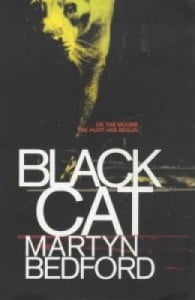
What will be your next project?
The one I was scribbling when you came in! I had a one book contract for Gloria, so once I’ve finished, I’ll be pitching to my publishers.
I’m not superstitious, but there’s a danger that if you talk about your ideas when they’re still in progress, they can go stale on you.
A lot of popular YA fiction has elements of the fantastic – particularly the dystopian. Your last adult novel was along these lines. Are you tempted to add to that genre?
My interest in speculative fiction was explored in The Island of Lost Souls. Also, I’ve read so many teenage novels that have gone into that territory, and some very good ones, like the Hunger Games trilogy and The Maze Runner. But I think it’s in danger of being saturated in the same way that dark romance and vampire novels were. What the world really doesn’t need at the moment is another dystopian teen novel.
Your books do have elements of fantasy, psychological extremity and high romantic rebellion. Does YA fiction give you scope to strike out into these areas?
It seems pertinent to a YA readership. As a teenager, you have to do what parents and teachers tell you. Your life is decided for you at a point where you’re discovering your identity and wanting to test boundaries.
That seems to be a ripe area to explore, this idea of transgression and boundaries and where we can resist the attempts to constrain us. In a novel you can give your characters the chance to act out something that your readers might not try for real, in the same way that, when we read a crime novel, we don’t necessarily want to murder someone, but it’s interesting to explore that world and that psychology.
In literary fiction, you can paper over a weak narrative, but in younger people’s fiction, there’s nowhere to hide. Do you agree?
The writing process for me is very similar now to when I was writing for adults, but one difference is that you need strong narrative drive. In literary fiction, the plot isn’t necessarily in the foreground. You can spend three pages inside a character’s head, but you wouldn’t get away with it in a teenage novel.
I use more devices like end of chapter twists or cliff-hangers, where the reader thinks, “I was going to go to bed, but I’ll read the next chapter because I want to find out what happens.” Now, when I read a lot of adult literary novels, I think, “For crying out loud, just get on with it!”
What was being a Costa Prize judge like?
I got invited to be a judge for the children’s category to begin with. Then I was invited to be the children’s category representative for the final panel. After the Booker, it’s probably next in terms of kudos and money. To be involved was a big honour, but also a responsibility because I know how much impact it can have on a writer’s career.
Were you gratified that a YA novel (The Lie Tree by Frances Hardinge) won?
I was delighted because it was such a fantastic thing for Frances Hardinge, but also for YA fiction. It’s forced the media to cover YA fiction. It may not be a turning point, but for a few months at least, YA fiction is being taken seriously.
To be able to argue the case for the Young Adult novel to win the overall prize when it’s only done it once in 30 years felt like a momentous decision. It became obvious half-way through the judges’ meeting that The Lie Tree was in serious contention. I started to get very excited and nervous on its behalf.
What is your impression of The Lie Tree and how did you pitch it to the panel?
It’s a very well-written book by any standards. Also, it’s a compelling story. I would have read it in one sitting if hadn’t had to get some sleep. All the other books I could put aside, but with this book I really wanted to find out what happened.
It’s a strong feminist book. The central character, Faith, is having a rite of passage as a young adult, emerging from the shadow of her father’s patriarchy and becoming an independent, thinking woman in her own right.
I didn’t have to make excuses for it. I made my case, expecting the other judges to step away, but almost all of them got behind the book and said how much they loved it.
When she won Costa Book of the Year, Frances Hardinge said: “It is a fantastic time to be writing YA fiction… There’s a beautiful jungle out there.” Do you concur?
I couldn’t have said it better. To come out with something as intelligent and articulate as that 30 seconds after discovering she’d won was impressive. I’d have needed a week before I could have said anything nearly as articulate.
It is an undiscovered area for a lot of readers. There has been crossover fiction – Harry Potter, Philip Pullman, Mark Haddon, Louis Sachar – but that has been the tip of a large iceberg. It’s been the most successful aspect of publishing for the last 20-25 years. Publishers know it, teenage readers know it, but the general adult readership has been unaware.
Although called ‘Litchbury’, Ilkley is a clear presence in your book. What does this part of the world mean to you?
I’m from Croydon and I’ve been living in Ilkley for 20 years. I love this area. One of my adult novels, Black Cat, was set on Ilkley Moor. I found that an inspiring landscape.
Litchbury is also the setting for Flip. The house Alex ends up living in is the house I live in now. I didn’t call it Ilkley because I wanted to take a few geographical liberties.
I find the town inspiring because of its setting and because of the connection between landscape and people.
It’s a lot easier to set a novel in a place you know well because you haven’t got to do all that research. Novels are works of the imagination, but in terms of location, it makes it a lot easier if you know where the buildings are.
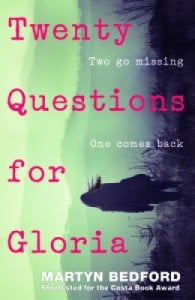
How did Twenty Questions for Gloria evolve?
The original idea was a semi-fantastical novel about a girl who wishes that life would offer her something more interesting and exciting, but doesn’t know what that might be.
When she buys an old coin from a charity shop, a genie-like figure appears. That’s the character Uman becomes in the finished novel. The reader would never have been sure whether he was a genie or if he was a figment of her imagination and her decision to lead a different life was coming from her own unconscious.
I went to Scissett Middle School, and as a workshop exercise with the students, I got them to answer the question, “If you could have three wishes, what would they be and why?” The answer that most appealed to me was, “I would like to travel into the future to see what life has in store, so that I can go back and change things if I don’t like the way I turn out.” That struck me as the idea for the trajectory of the novel.
In fact, when I came to write the novel, I’d moved away from the fantastical idea. I turned Uman into a flesh and blood boy who turns up in Gloria’s school and is much more maverick and transgressive than her. She falls under his spell and goes off on an adventure with him, until she actually discovers what she wants to be.
I like how you avoid YA clichés. Is this an important part of respecting your audience?
It’s easy to get into creating stereotype characters and I hate it as a reader. There’s no reason why teenage fiction should pander to that any more than adult fiction.
I was very keen that Tierney, the pretty one, shouldn’t be the bitch she would often be in teenage fiction. With Uman, I wanted readers to see why Gloria would be drawn to him. I didn’t want Gloria to be shallow enough to fall for a guy just because of the way he looked. It’s because he’s interesting and makes life interesting: those things appeal to her far more than his looks.
How did you come up with the structuring device of 20 questions?
I wanted to begin with her being interviewed by the police and then use flashback and fill in what’s led to that point. My initial idea was to have a series of questions in bold in each chapter, as if she’s constantly having to justify what she’s done.
When I started writing that, it looked really intrusive. Then I had the idea that I could have each chapter based on one question and make that the title. Once I struck upon it, it was one of those lightbulb moments.
Is being ‘instructional’ something you don’t have to worry about with children’s fiction nowadays?
Melvin Burgess banged down most of those doors in the mid-90s. You might push things to a certain point the publishers would baulk at, but by and large, there aren’t many taboo areas now.
In The Lie Tree, the central character, Faith, is a 15 year old girl eating fruit from this tree and having hallucinogenic experiences. Margo Lanagan’s Tender Morsels opens with an underage girl being violently raped by her own father. Somebody going on the run with her boyfriend is fairly tame by comparison.
Unless teenagers recognise that fiction is about the world as they know it, they’re not interested. Teenagers don’t want to be instructed by grown-ups. Within the first page, they’ll realise they’re being preached at.
Also, I don’t think it’s my role to tell readers what to think. I wouldn’t do it for an adult readership and I wouldn’t do it for a teenage readership. You can invite the reader to think about what Gloria does in that situation, but once I start telling them whether they should or shouldn’t, the novel is dead in the water. I present the adult view of that world, but I don’t give it any more prominence or support than Gloria and Uman’s decisions.
Filed under: Written & Spoken Word
Tagged with: books, Costa Book Awards, Creative Writing, Fiction, Flip, Frances Hardinge, interview, leeds, Leeds Trinity University, Martyn Bedford, novels, The Lie Tree, Twenty Questions for Gloria, writing, YA
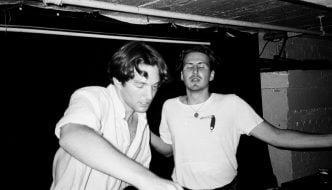
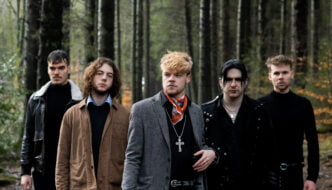
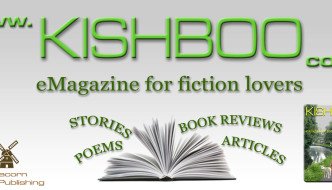
Comments